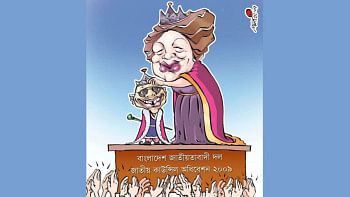Malnutrition ubiquitous in CHT mothers, infants
A number of children in the Chittagong Hill Tracts (CHT) are stunted, wasted, and underweight, a study of Manusher Jonno Foundation (MJF) has found.
Anaemia prevalence in those children (6-59 months) is 61.9 percent and nearly one-fifth of the hill women are at least moderately underweight, it shows.
The World Bank-supported nutrition study, conducted in Rangamati and Bandarban in October-November 2013, was presented at a seminar titled "Mother and Child Nutrition, Food Security and Development: At Chittagong Hill Tracts", at the capital's Bangla Academy yesterday.
According to the study, the prevalence of stunting (low height for age) in children aged 0-59 months is 39 percent, wasting (low weight for height) in children aged 24-59 months is 53 percent and underweightness in children aged 0-23 months is 43 percent is 58 percent.
The paper shows some traditional beliefs such as pregnancy is a natural condition and thus needing no attention; if a woman eats more during pregnancy she will have a bigger baby causing obstructed labour; connection between stomach and womb exists and womb and stomach are rested together by not giving food to the mothers; and 71 food items including some fish, meat, fruits and vegetables are prohibited during pregnancy.
It also found that new mothers are considered impure and are not allowed to eat with other family members until the purification ceremony is held in Marma community after birth of a child; mother is only given salt, water and rice at least for two weeks and some babies are fed earlier than the recommended age (6 months) because mothers have to go to work in jhum land.
MJF recommended that local knowledge, wisdom and practice should be analysed, documented, disseminated and considered in designing an intervention and a multi-sector approach -- advocacy, community-specific info, development of IEC (information, education and communication) materials -- should be applied.
Roksana Quader, additional secretary to the health ministry; Dr Shamim Imam, director of MJF; Achinta Das Gupta, executive director of DSL; and development economist Nazme Sabina also spoke.

 For all latest news, follow The Daily Star's Google News channel.
For all latest news, follow The Daily Star's Google News channel. 



Comments